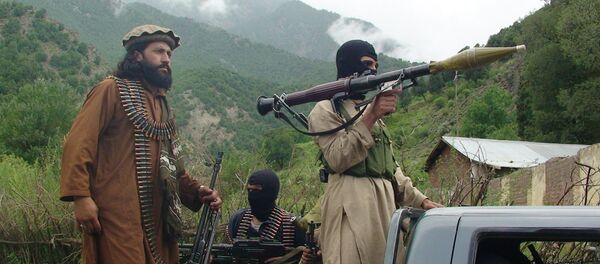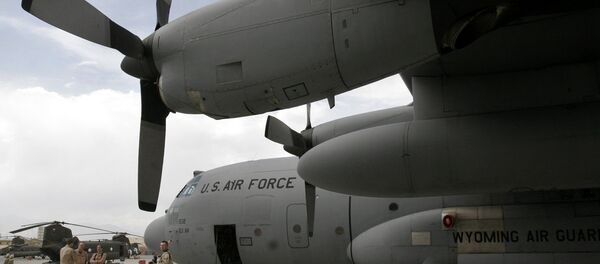MOSCOW (Sputnik) — The military operation by the United States and its allies in Afghanistan began on October 7, 2001. It was part of Operation Enduring Freedom, which came in response to the September 11, 2001 terrorist attack.
The introduction of US and UK forces in Afghanistan was based on UN Security Council Resolution 1368 of September 12, 2001.
The mission of both contingents, according to their command, was to search for and eliminate militants of the Afghan extremist movement Taliban and the al-Qaeda international terrorist group.
During the first month, combat operations were limited to US air attacks on Taliban military installations. After a month of bombing, the Taliban’s combat capability significantly declined. On November 9, 2001, NATO forces, in conjunction with the anti-Taliban Northern Alliance, conducted the first major offensive operation since the start of the air campaign: Mazar-i-Sharif, a large city, was seized. On November 13, the Taliban abandoned Kabul, which had been under their control since 1996, without a fight.
On November 25, the first large US military contingent landed in Afghanistan: about 1,000 marines were airlifted from ships in the Arabian Sea to an area south of Kandahar, where they set up a forward operation base at Camp Rhino.
The main stage of combat operations ended on December 7 with the seizure of Kandahar.
During the two-year “active phase” of the war against international terrorism, some successes were achieved. According to US sources, two-thirds of Al Qaeda’s leadership and activists were killed or captured during this time, including Abu Hafs, its military representative, who was killed in Kandahar, and Abu Muhammad Misri, bid Laden’s advisor, who was killed in Khost.
In May 2007, international coalition forces eliminated the notorious field commander Mullah Dadullah, commander of the Taliban forces in the south of the country.
Although it lost control, the Taliban did not lose its military capability and began using guerrilla warfare. Their main tactics included attacks on convoys and patrols, the mining of roads and bridges, and attacking and killing US and NATO service personnel and civilians.
On December 1, 2009, speaking at the West Point military academy, US President Barack Obama announced a new strategy in Afghanistan, which he said comprised three key elements: military operations against the Taliban, collaboration with the UN and other international partners and the Afghan people, and a close partnership with Pakistan. Obama announced the dispatch of an additional 30,000 service personnel to Afghanistan, noting that this would help stabilize the situation and then proceed with the withdrawal of troops from the country in July 2011.
Towards May 2011, the eastern province of Nuristan bordering Pakistan effectively became a “Taliban republic.” The US military units that had been deployed there had to abandon their forward-based positions at the beginning of the year due to heavy losses and ineffective operations in the border gorges.
On May 23, 2011, Mohammad Omar, the leader of the Taliban movement in Afghanistan, was killed in Pakistan.
In his June 2011 address to the nation, President Obama said the transfer of responsibility for ensuring security in Afghanistan to the local authorities should be completed by 2014.
In his February 13, 2013 address to Congress, President Barack Obama officially announced the withdrawal of half of the US contingent (34,000 service personnel) from Afghanistan by the beginning of 2014. According to media reports, at that time, about 66,000 US service personnel were deployed in Afghanistan.
On September 30, 2014, the United States and Afghanistan, as well as Washington and NATO, signed security agreements, providing a legal framework for the presence of a US contingent (about 10,000 service personnel) and NATO forces (about 3,000) in the republic until 2016 after the formal withdrawal of the main anti-terrorist coalition force from Afghanistan in late 2014.
According to Obama, the mission was conceived to provide assistance to Afghan security forces in conducting counter-terrorist operations against al-Qaeda.
On December 28, 2014, the US-led mission in Afghanistan was completed. The official closing ceremony took place in Kabul in utmost security due to safety considerations.
The US military campaign in Afghanistan was the longest war in US history, over 13 years. The maximum size of the US military contingent during the war was 140,000 service personnel in 2010.
During combat operations, over 2,300 US service personnel and over 1,000 coalition soldiers were killed. A total of 17,674 US service personnel were injured.
A total of 21,000 civilians were killed in cross fire, executions, bomb attacks or night raids, according to various estimates.







